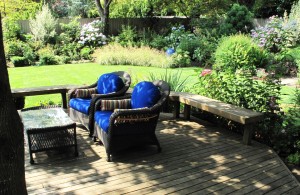Ideal Northwest Plants for an Edible Landscape
 One of the benefits of living in the Pacific Northwest is the abundance of edible plants native to the area. For homeowners who are interested in adding edibles to their landscaping, Beaverton and other neighborhoods in the Portland area are home to many types of berries, lettuce and flowers that can go from the yard to the table. A knowledgeable landscaping contractor won’t think twice about adding edible plants to a landscape design, as long as they look as good as they taste.
One of the benefits of living in the Pacific Northwest is the abundance of edible plants native to the area. For homeowners who are interested in adding edibles to their landscaping, Beaverton and other neighborhoods in the Portland area are home to many types of berries, lettuce and flowers that can go from the yard to the table. A knowledgeable landscaping contractor won’t think twice about adding edible plants to a landscape design, as long as they look as good as they taste.
Here are a few of our favorite edible landscape fixtures:
Kale
Kale is a nutritious, delicious and attractive addition to any yard or garden. The leaves can grow quite big, giving you plenty of greens for a salad or sandwich. Many professional landscape services like to incorporate kale because it comes in a variety of attractive colors, including deep greens, purples, green-browns and reds. You can even treat it as a shrub and use it to line pathways or yards.
Huckleberry
The northwest is famous for the huckleberry plant, and for good reason. This tasty evergreen is hardy, can grow up to four feet tall, and works well in shady environments. In the summer the plant produces a bountiful harvest of bright blue berries, perfect for jams, cakes and ice cream. During the rest of the year, the huckleberry’s small leaves add a sophisticated touch any landscape contractor would appreciate.
Oregon Grape
The Oregon grape produces tart berries in the fall that are great for making juice or jam. It grows tall and wide, so make sure to plant it in an area with a lot of room for growth. The Oregon grape also offers bright yellow flowers in the spring and holly-like leaves during the fall and winter.
Marigolds and Calendulas
Most people don’t realize it, but many flowers are edible. Marigolds and calendulas are just two examples. These beautiful yellow flowers are popular go-to plants for many landscaping services because they’re relatively easy to get started and come back year after year. They can be dried and used in tea blends or left fresh and used in salads or cakes. Make sure to save the seeds, though – you can sow them next spring!
